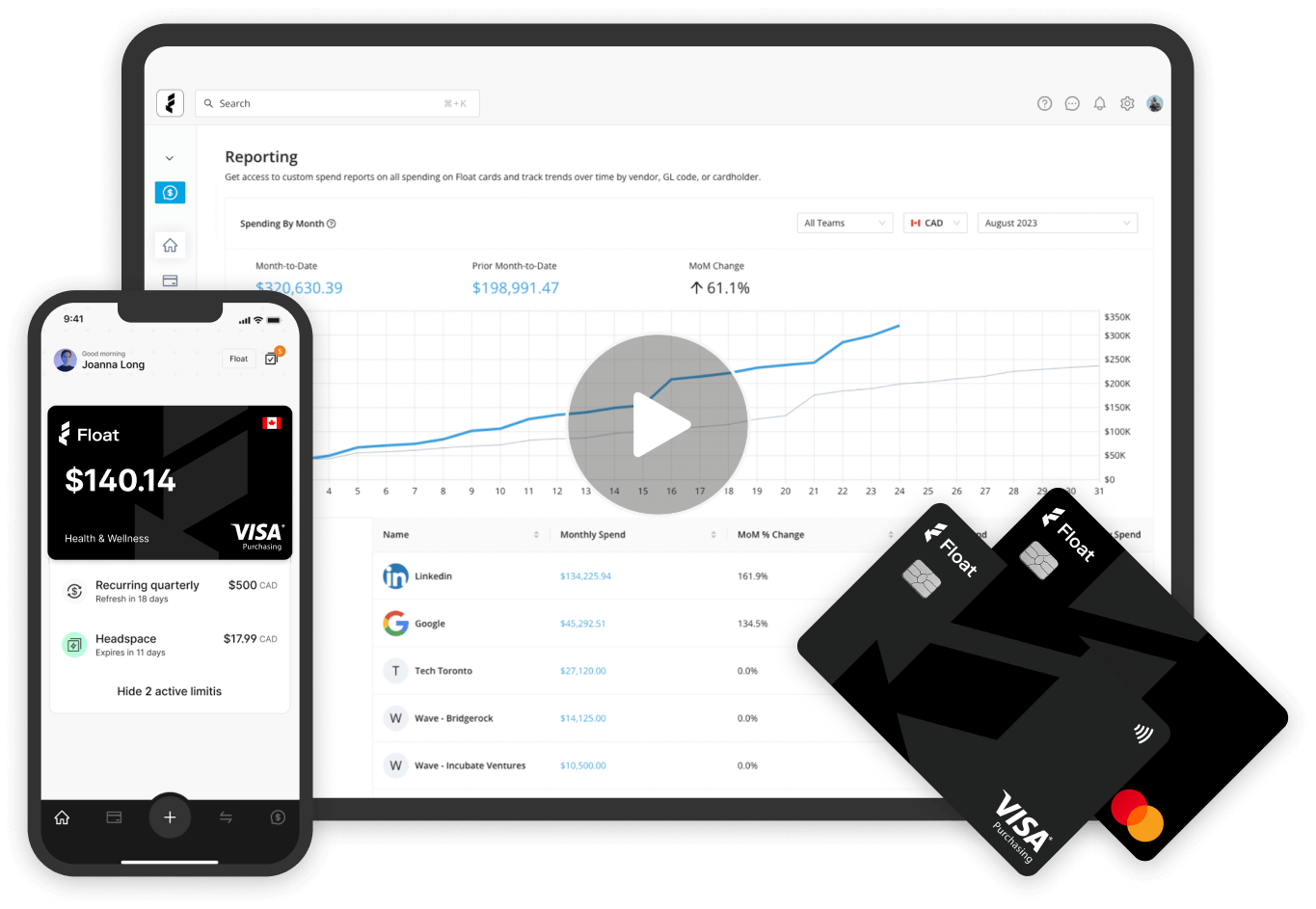Cash Flow Optimization
Liquidity Management: Ensuring Cash Readiness
Let’s unpack what liquidity management is, why it matters, and the strategies and tools that will help you stay cash-ready.
September 5, 2025

A harsh truth many business owners learn too late: profitability and liquidity are not the same thing. A business can show healthy profits on paper and still fail if it runs out of cash.
That’s where liquidity management comes in. It’s the practice of ensuring you always have readily available cash flow to cover essential expenses while still putting excess funds to work for future growth.
In this article, we’ll unpack what liquidity management really means, why it matters, and the strategies and tools that will help you stay cash-ready.
What is liquidity management?
Liquidity management is the process of monitoring, forecasting and optimizing your business’s cash and liquid assets to ensure you can meet short-term financial obligations (like payroll, supplier invoices, rent and taxes). It’s finding the balance between having enough readily available funds to keep operations running smoothly, without holding so much idle cash that growth opportunities pass you by.
If profitability is your ability to generate income over time, liquidity is your ability to cover immediate financial obligations with cash or assets that can quickly be converted to cash. In other words, a business can be profitable on paper but still face liquidity issues if cash reserves are low and revenue is tied up.
To measure liquidity, finance leaders often look at ratios and indicators such as:
- Working capital: Current assets minus current liabilities. A positive number shows you have a buffer to cover financial obligations.
- Current ratio: Current assets ÷ current liabilities. Indicates short-term solvency.
- Quick ratio: Similar to the current ratio, but excludes inventory.
- Cash ratio: A more conservative measure, looking strictly at cash and cash equivalents versus liabilities.
- Liquidity coverage ratio (LCR): Primarily used in financial services, this ratio assesses whether an organization holds sufficient high-quality liquid assets to withstand short-term stress scenarios.
It’s also important to distinguish liquidity management from working capital management. While the two overlap, working capital management has a narrower focus on balancing current assets and liabilities. Liquidity management takes a broader view, incorporating forecasting, contingency planning and even financing strategies to ensure ongoing solvency. In practice, both approaches work together: managing receivables and payables improves working capital, while liquidity management ensures you’re prepared for unexpected events or opportunities.
Why liquidity management matters
Without liquidity, you may find yourself delaying payments, scrambling for expensive short-term loans or even halting operations.
Strong liquidity management strategies help:
- Prevent cash shortages by ensuring you have enough funds to cover payroll, taxes and supplier obligations.
- Build confidence with stakeholders like lenders, investors and suppliers who want reassurance that your business can pay on time.
- Support agility by giving businesses the buffers they need to adapt during downturns, unexpected expenses or sudden growth opportunities.
- Reduce reliance on costly debt by lowering the need for short-term borrowing, protecting margins and freeing up resources for growth.
Ultimately, liquidity management is about protecting both the day-to-day stability and the long-term resilience of your business.
Common liquidity challenges businesses face
Even with the best intentions, many businesses struggle to maintain healthy liquidity. Seasonal revenue swings are a common culprit. Industries such as retail, construction or tourism often experience significant gaps between inflows and outflows, resulting in cash crunches during the off-season. Delayed customer payments can add further strain, leaving cash tied up in receivables when it’s needed most.
Large, unexpected expenses, such as equipment failures, regulatory costs or emergency repairs, can quickly deplete reserves if there’s no contingency plan. Some businesses, however, lean too heavily on short-term borrowing to cover gaps, creating a cycle of debt dependency that chips away at margins. On top of all this, high fixed costs such as rent and payroll put constant pressure on liquidity, especially when revenue slows.
The good news is that with strong liquidity management strategies, businesses can anticipate these challenges and address them before they become a risk.
Key components of liquidity management
Liquidity management strategies are built on a few core practices:
| Component | Why it matters | How to put it into practice |
| Cash flow forecasting | Provides visibility into when money will arrive and when it needs to go out, helping you anticipate shortfalls and plan ahead. | Build rolling forecasts weekly or monthly Run best- and worst-case scenarios to prepare for fluctuations |
| Accounts receivable management | Strengthens liquidity by collecting payments faster through tighter credit terms, automated reminders or early-payment incentives. | Automate invoicing Send overdue invoice reminders Consider discounts for early payments to accelerate cash inflows |
| Accounts payable management | Optimizes cash management by timing vendor payments to preserve reserves without damaging relationships. | Negotiate longer payment terms with suppliers Maintain strong communication and trust with suppliers |
| Contingency planning | Creates a safety net by setting aside reserves or liquidity buffers to handle unexpected expenses without relying on costly debt. | Establish a minimum reserve (e.g., one month of payroll, rent, and taxes) Review buffer levels regularly |
Best practices for strong liquidity management
Strong liquidity requires consistent discipline and foresight. Here’s how you can get started.
First, maintain rolling cash forecasts. Updating projections on a weekly or monthly basis, and running both optimistic and conservative scenarios, gives you advance warning of shortfalls before they become urgent.
Next, diversify your funding sources. Relying on a single lender or credit line can leave you exposed. Instead, build flexibility by maintaining access to multiple options such as lines of credit, trade finance and corporate cards. Leveraging credit strategically gives your business a flexible bridge to manage seasonal swings, delayed payments or unexpected expenses.
You should also look for opportunities to automate invoicing and payment reminders. Faster, more reliable receivables mean stronger liquidity, and automation reduces the risk of delays or human error. Pair this with efforts to optimize working capital by shortening collection cycles, negotiating supplier terms and monitoring inventory turnover to keep more cash available.
Finally, establish minimum cash reserves or liquidity buffers. Many finance leaders set aside at least one month of essential expenses (like payroll, rent and taxes) as a baseline.
Try Float for free
Business finance tools and software made
by Canadians, for Canadian Businesses.
Tools and techniques for liquidity management
Finance teams are moving beyond spreadsheets to adopt solutions that give them real-time visibility, automation and control. Some of the most effective tools and techniques for liquidity management include:
- Accounting and treasury management software: Platforms that integrate banking, payments and forecasting help centralize liquidity planning and reduce manual errors.
- Dashboards and KPIs: Tracking metrics like days cash on hand, current ratio, receivables turnover, payables turnover and liquidity coverage ratio keeps liquidity health visible and measurable.
- Scenario planning and stress testing: Modeling best-, base- and worst-case scenarios ensures you’re ready for downturns, delayed payments or sudden expenses.
- Receivables automation: Tools that automate invoicing, reminders and collections shorten payment cycles and free up cash faster.
- Bank and payment integrations: Real-time syncing of account balances and transactions gives finance leaders a clearer, more accurate picture of available cash.
- Spend management solutions: Platforms like Float give businesses proactive control with features such as manager-approved preloaded cards, automated bill pay and integrations with accounting tools like QuickBooks and Xero. These not only streamline outgoing payments but also provide dashboards to track spending trends and forecast liquidity.
Ready to strengthen your liquidity strategy?
If you only learned one thing about liquidity management today, let it be this: a business can be profitable on paper but still collapse without the cash to cover short-term obligations. By forecasting cash flow, managing receivables and payables, building reserves and adopting the right tools, you can ensure your business is always prepared.
If you’re ready to strengthen your company’s cash readiness, explore how Float can help with spend controls, bill pay automation and real-time visibility into your cash position.
Written by
All the resources

Corporate Cards
Discover: Virtual Credit Cards for Canadian Businesses
Explore the benefits of virtual credit cards with Float. Discover how this modern payment solution enhances security and simplifies your
Read More
Cash Flow Optimization
Working Capital Turnover: Measuring Efficiency
Ready to master your working capital turnover? Get expert tips from Float and Sendy Shorser.
Read More
Financial Controls & Compliance
4 Free Online Bookkeeping Courses for Canadian Businesses
Want to level up your bookkeeping? These courses might be the key. Read more to learn what you should be
Read More




